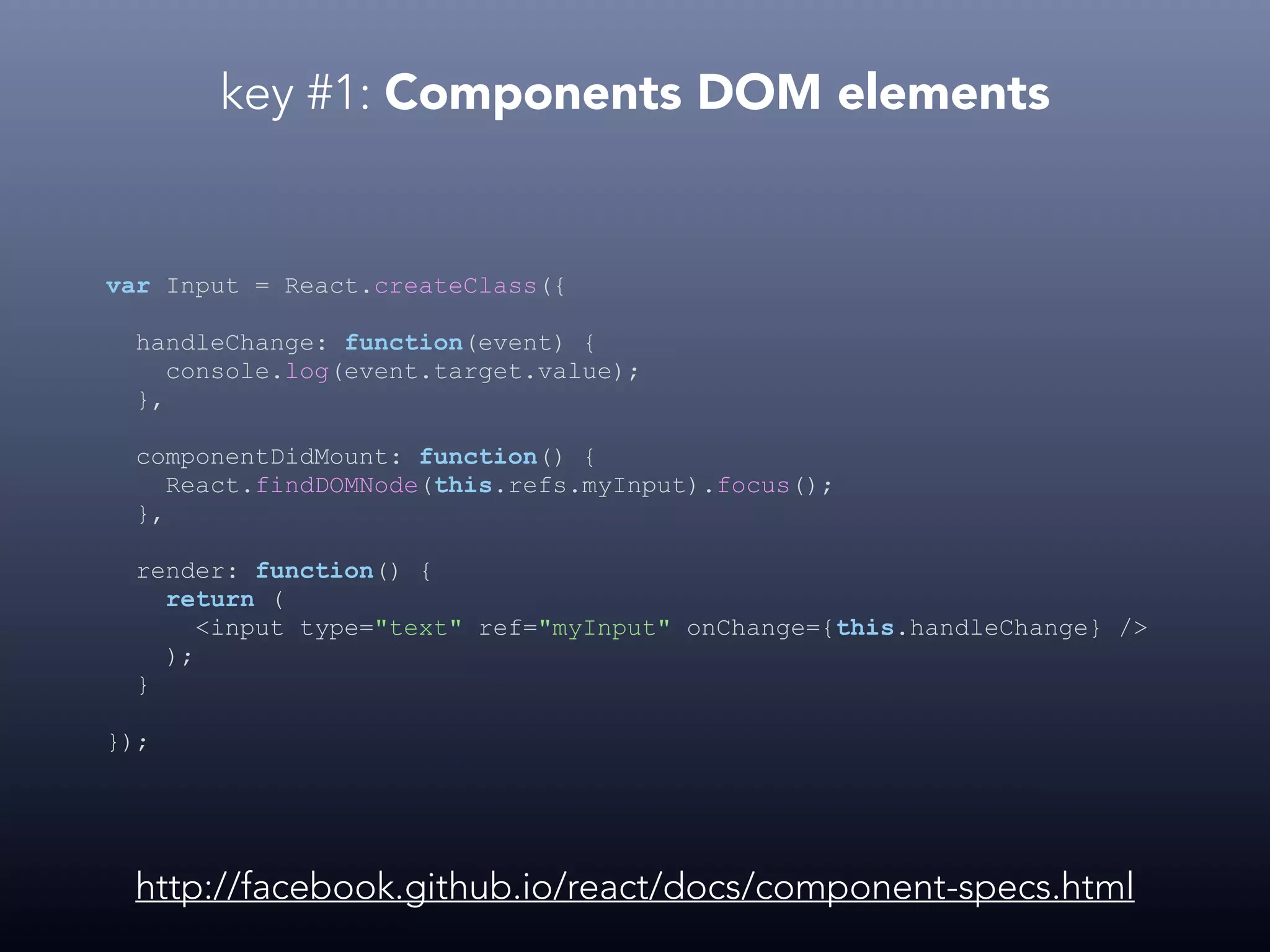The document discusses React.js, a JavaScript library for building user interfaces. It allows building modular components that efficiently update based on data changes. Many large companies use React, including Facebook, Instagram, and WhatsApp. Components, the virtual DOM, and one-way data binding are the key concepts. Components are reusable UI elements that can have state and handle events. The virtual DOM diffing algorithm allows efficient re-rendering. Data flows unidirectionally from parent to child components.









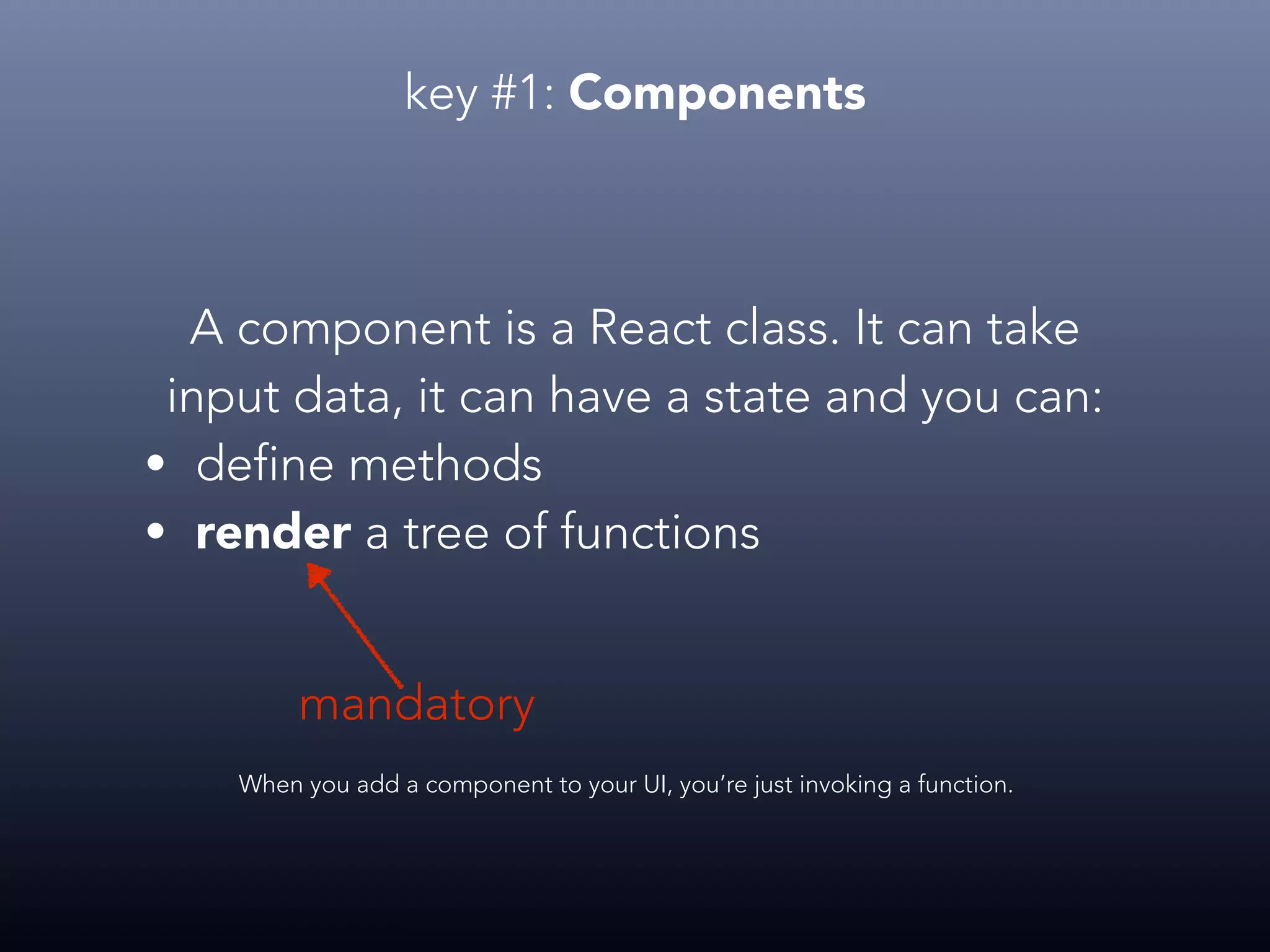
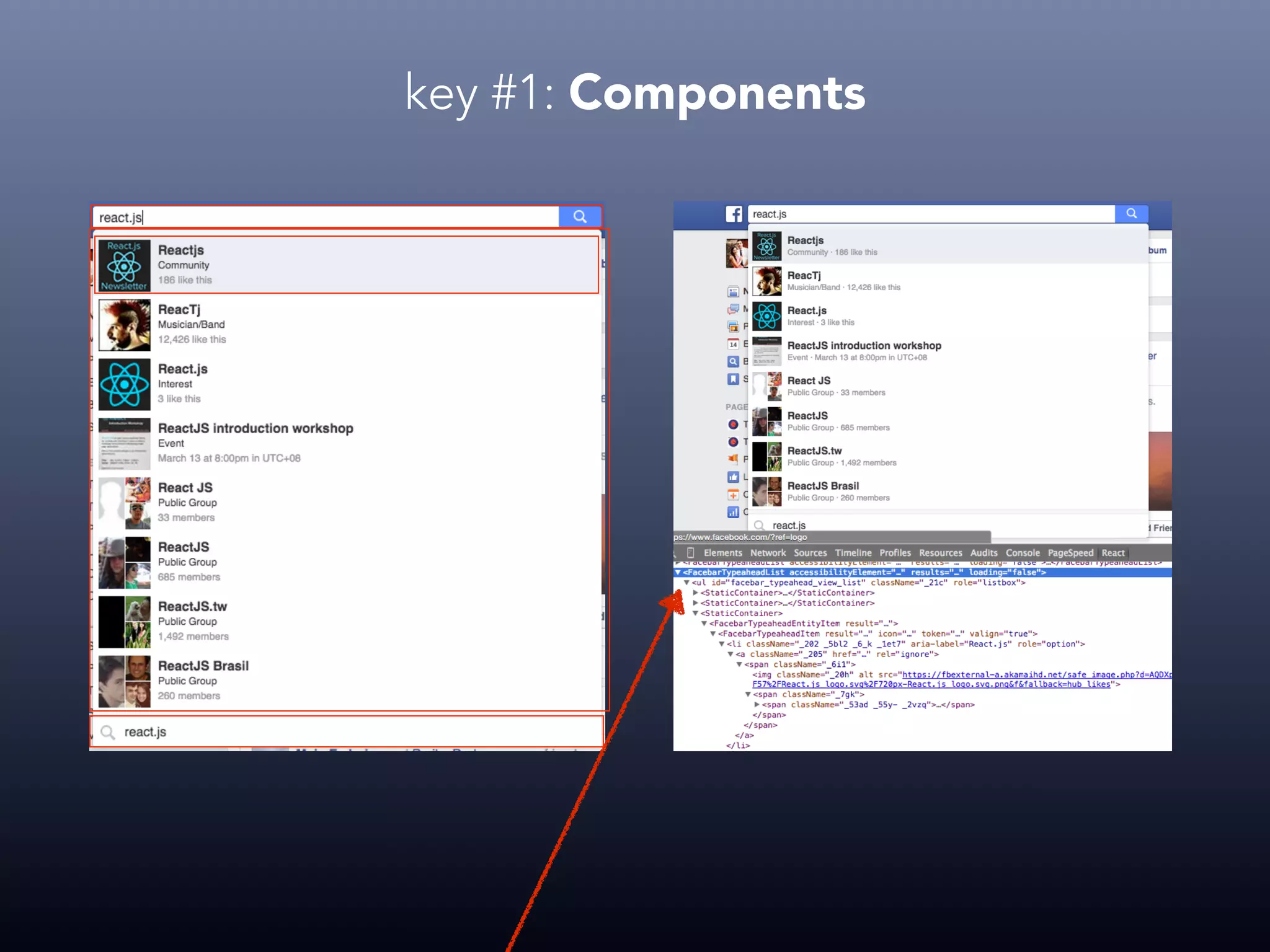
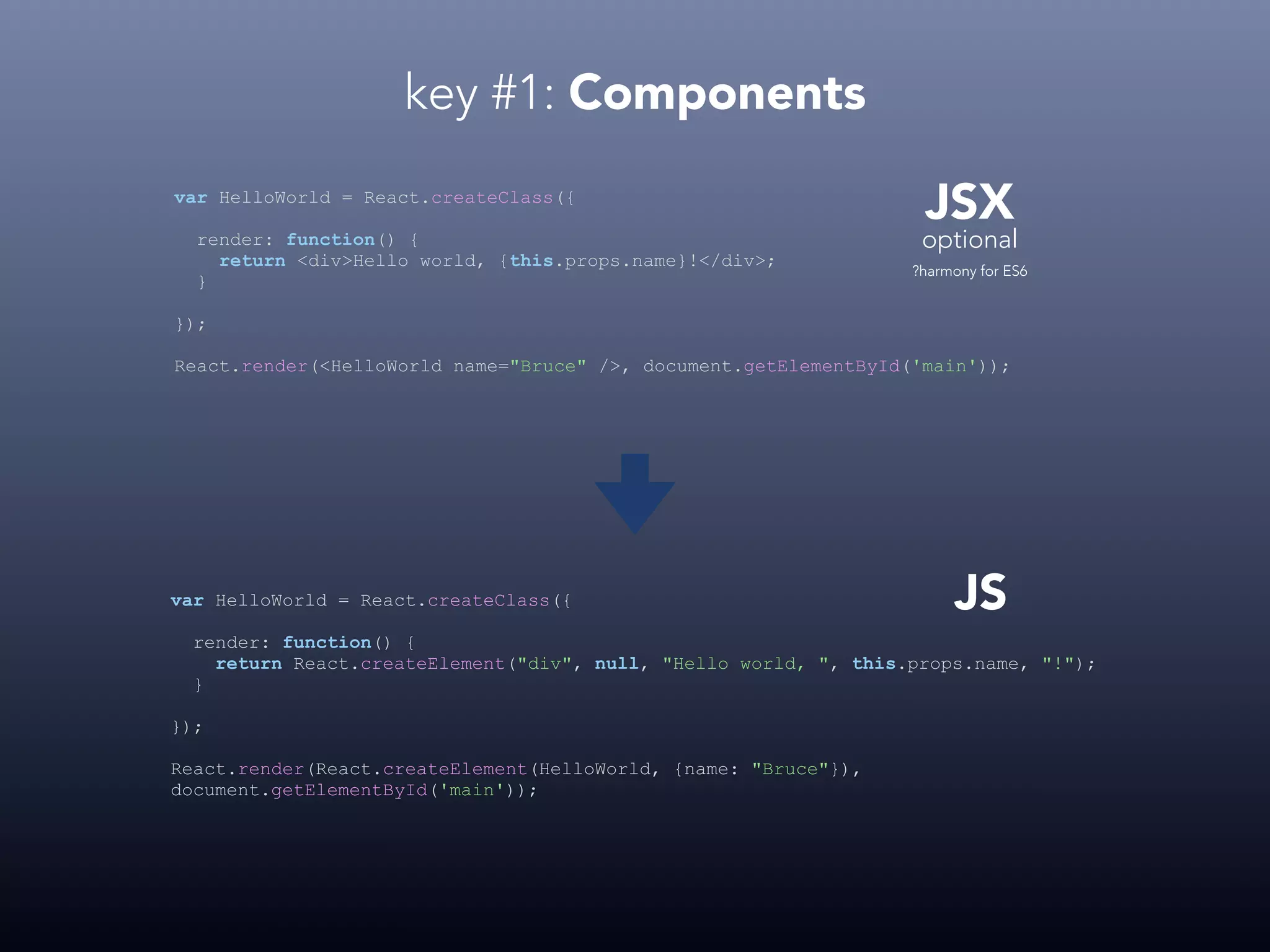


![key #1: Components properties var Box = React.createClass({ render: function() { var list = this.props.list.map(function(item) { return <li>{item}</li> }); return ( <div> <h1>{this.props.title}</h1> <ul> {list} </ul> </div> ); } }); React.render(<Box title="Cool Box" list={['item 1', 'item 2', 'item 3', 'item N']} />, document.body);](https://image.slidesharecdn.com/reactjs-150319055011-conversion-gate01/75/Reactjs-Rethinking-UI-Devel-15-2048.jpg)

![key #1: Components state var Box = React.createClass({ getInitialState: function() { return { hasDetailsVisible: false }; }, handleToggle: function() { this.setState({ hasDetailsVisible: !this.state.hasDetailsVisible }); }, render: function() { var list = this.props.list.map(function(item) { return <li>{item}</li> }); var detailsStyle = this.state.hasDetailsVisible ? {display: 'block'} : {display: 'none'}; return ( <div> <h1>{this.props.title}</h1> <button onClick={this.handleToggle}>toggle details</button> <ul style={detailsStyle}> {list} </ul> </div> ); } }); React.render(<Box title="Cool Box" list={['item 1', 'item 2', 'item 3', 'item N']} />, document.body);](https://image.slidesharecdn.com/reactjs-150319055011-conversion-gate01/75/Reactjs-Rethinking-UI-Devel-17-2048.jpg)

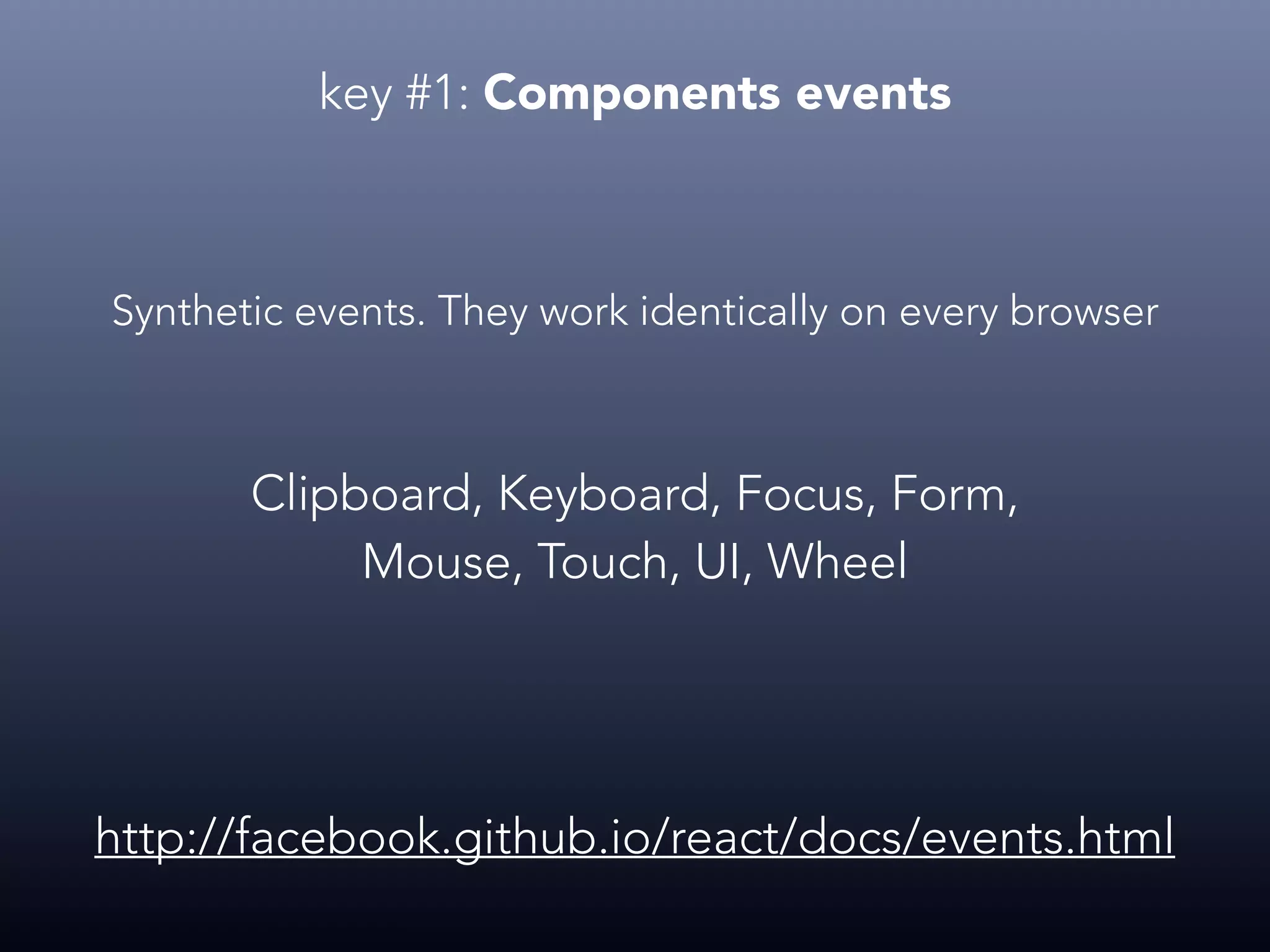
![key #1: Components events var Box = React.createClass({ getInitialState: function() { return { hasDetailsVisible: false }; }, handleToggle: function(event) { this.setState({ hasDetailsVisible: !this.state.hasDetailsVisible }); }, render: function() { var list = this.props.list.map(function(item) { return <li>{item}</li> }); var detailsStyle = this.state.hasDetailsVisible ? {display: 'block'} : {display: 'none'}; return ( <div> <h1>{this.props.title}</h1> <button onClick={this.handleToggle}>toggle details</button> <ul style={detailsStyle}> {list} </ul> </div> ); } }); React.render(<Box title="Cool Box" list={['item 1', 'item 2', 'item 3', 'item N']} />, document.body);](https://image.slidesharecdn.com/reactjs-150319055011-conversion-gate01/75/Reactjs-Rethinking-UI-Devel-20-2048.jpg)
